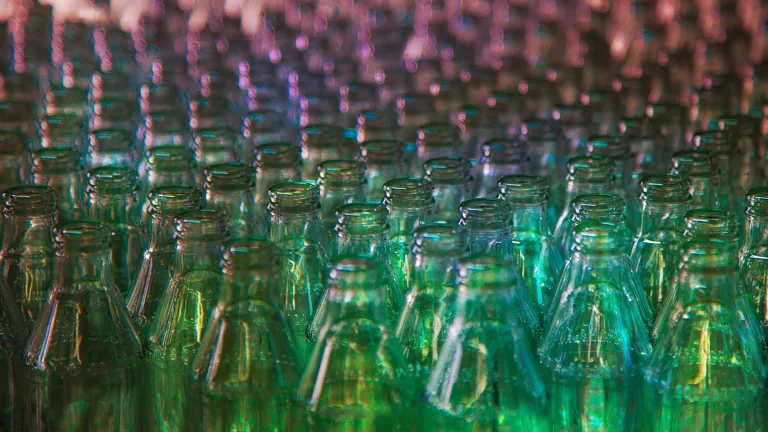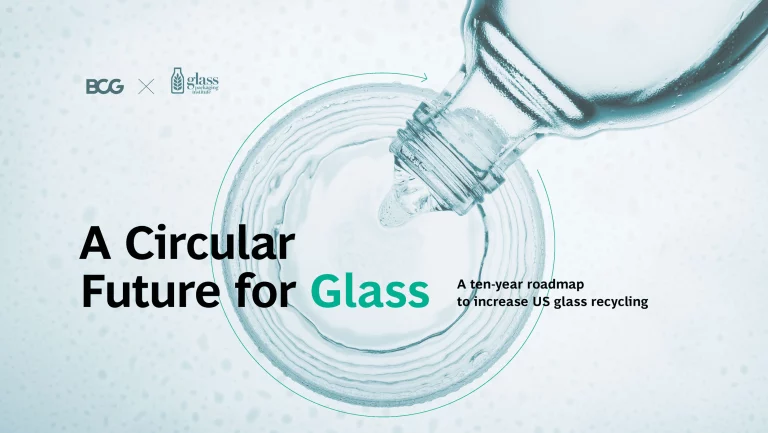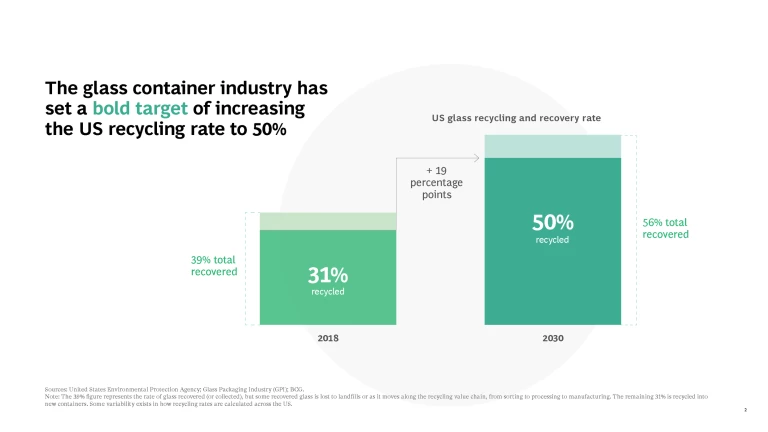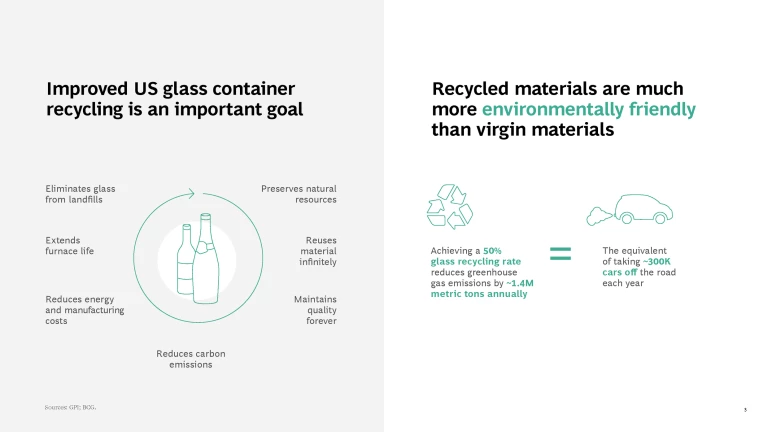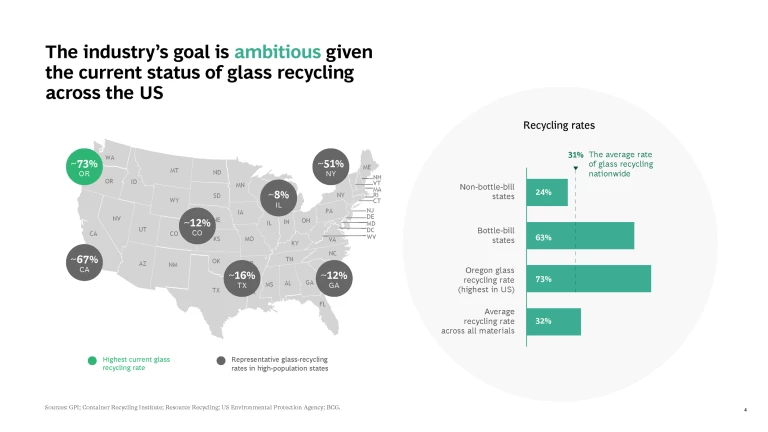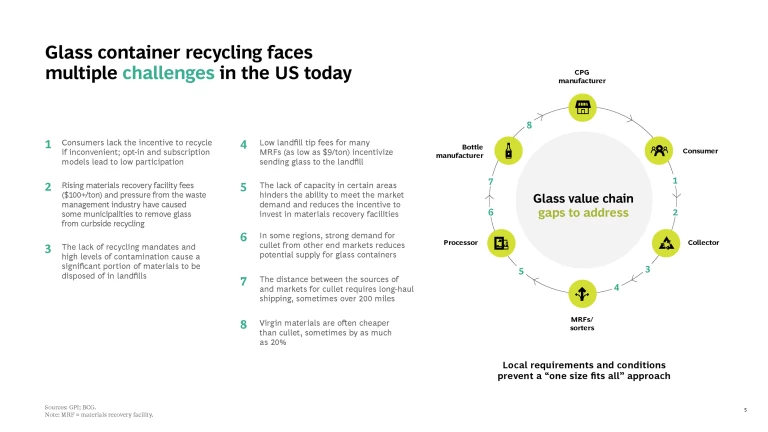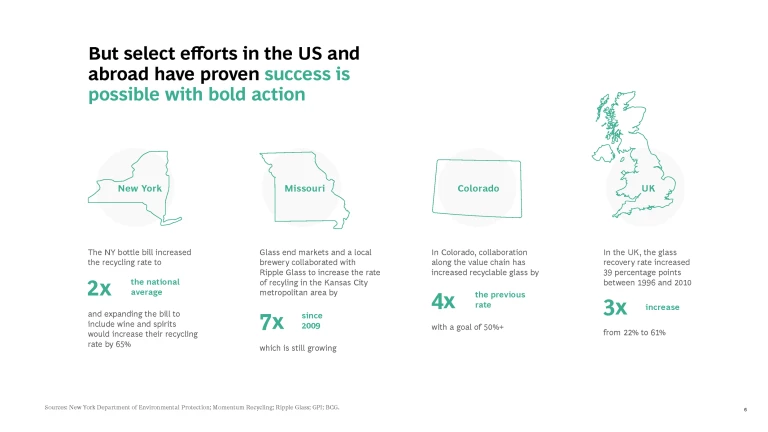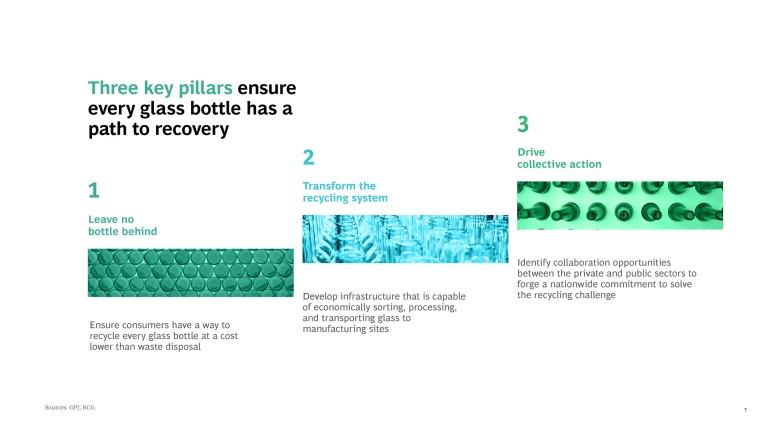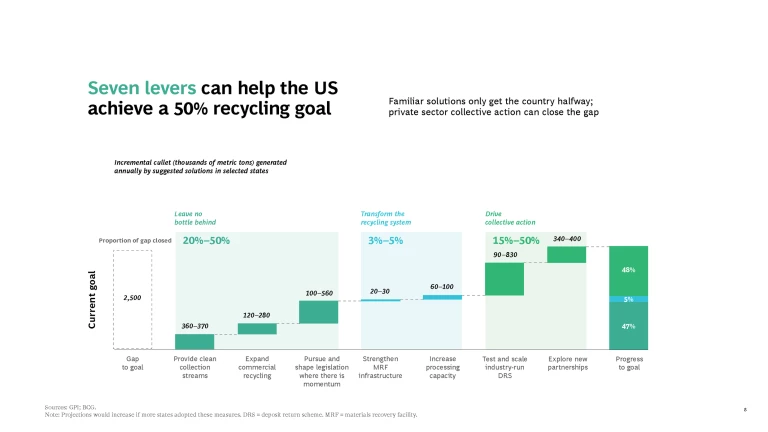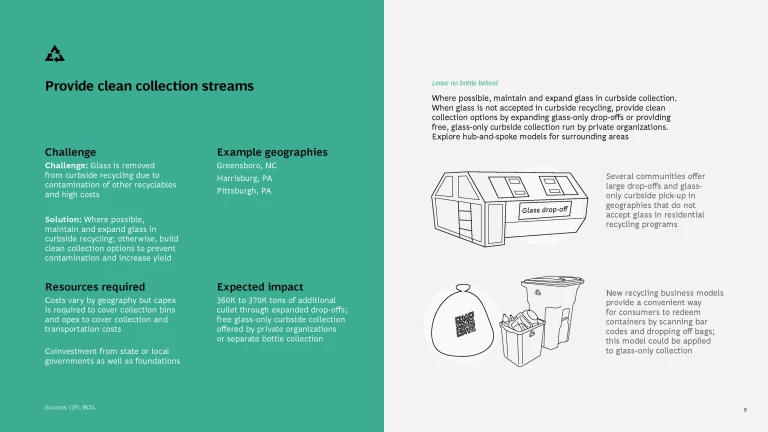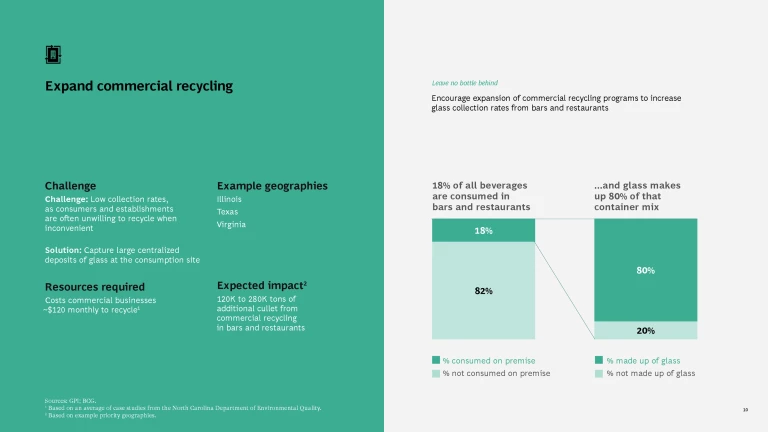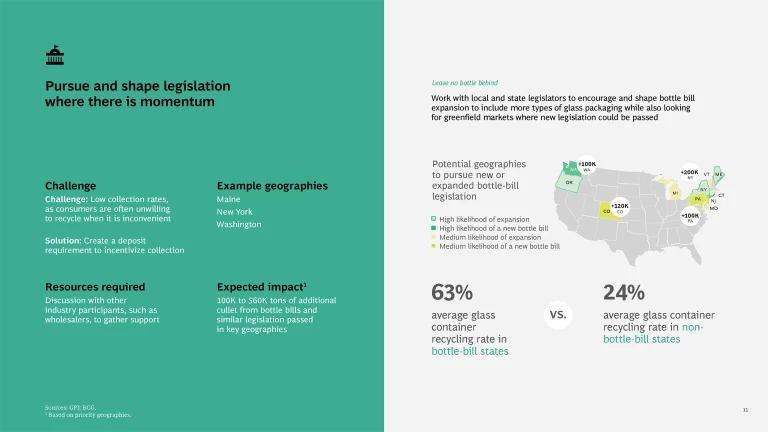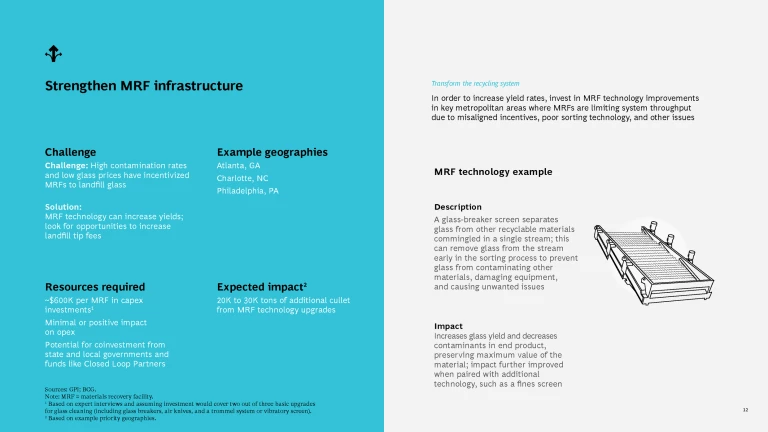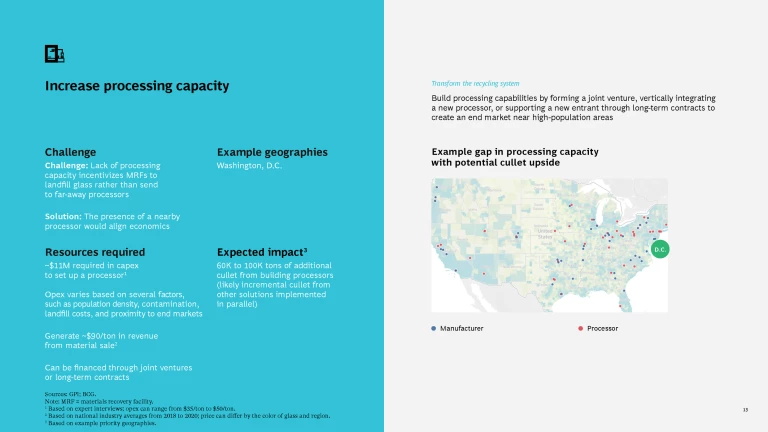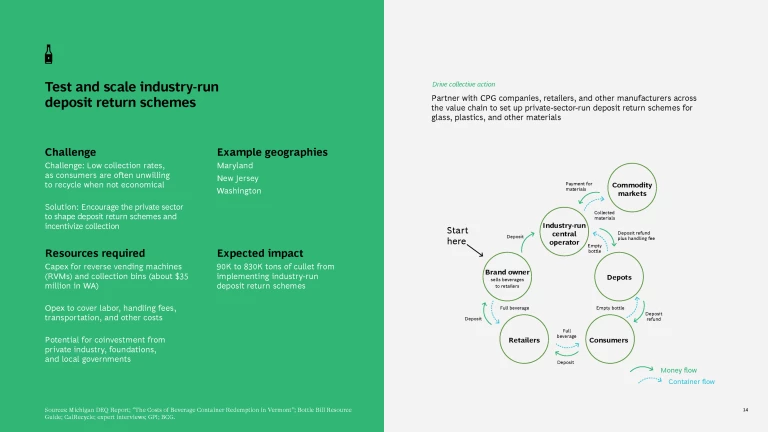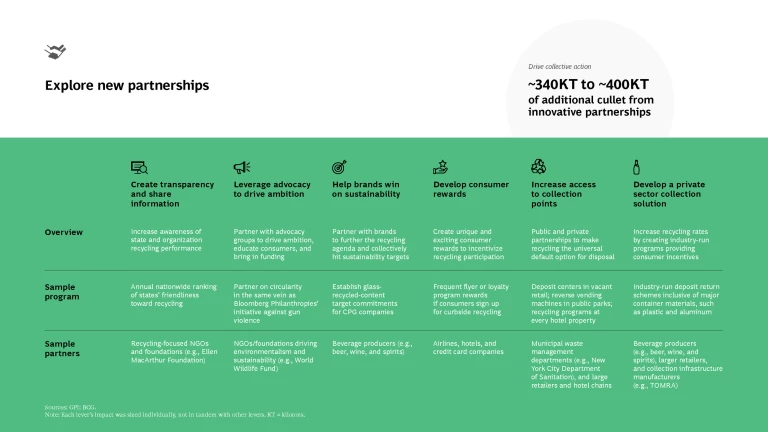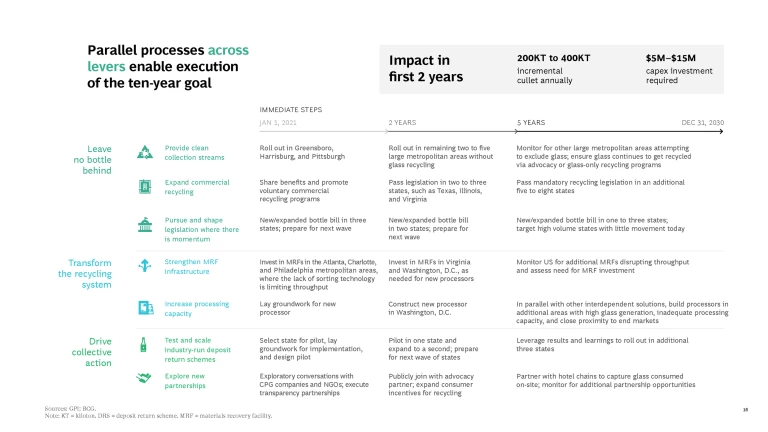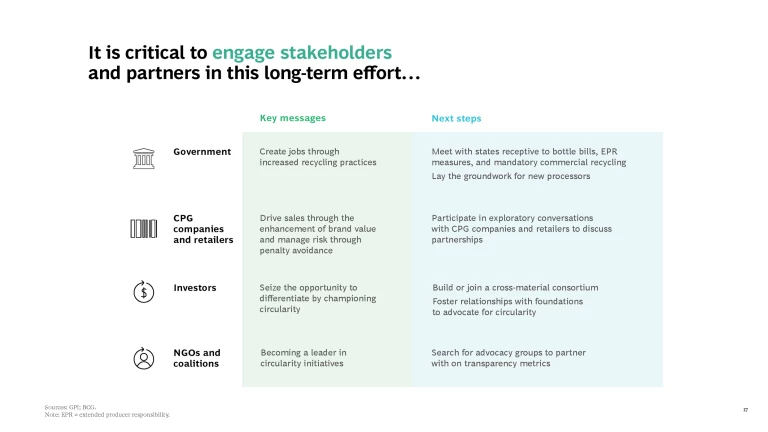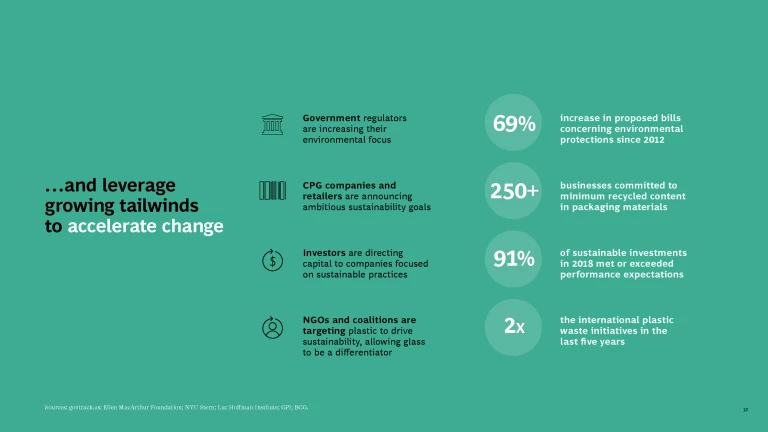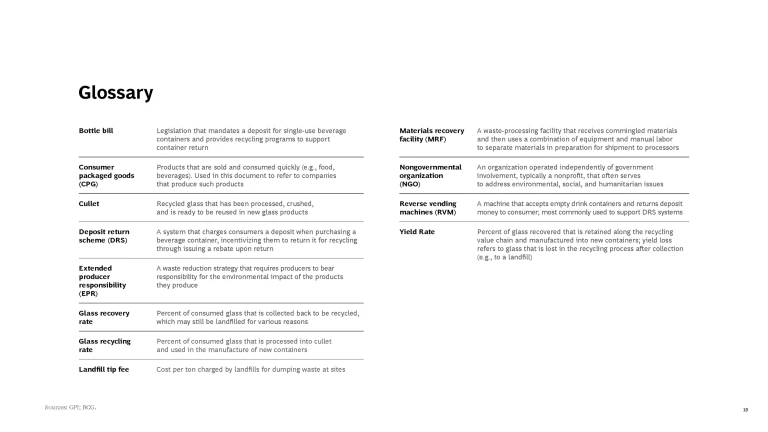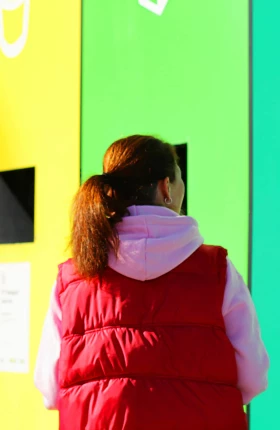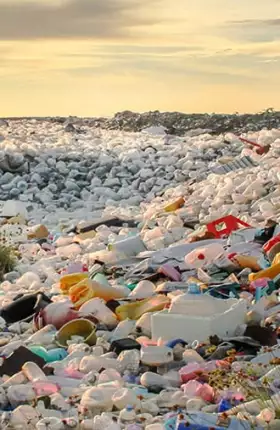Glass is infinitely recyclable, capable of being continually reused without a loss in quality or purity. It is one of the reasons that consumers know and trust glass. Yet the US does not recycle nearly as much glass as it could. The country’s glass-recycling rate has hovered around 33% for many years. In Europe and some US states with bottle deposit laws, average glass-recycling rates are closer to 70%—proof that high rates of glass recycling are possible.
Glass recycling and reuse has enormous environmental benefits. If the US were to achieve a 50% glass-recycling rate, it would divert millions of tons of material from landfills annually while reducing greenhouse gas emissions by about 1.4 million metric tons. That’s the equivalent of taking 300,000 cars off the road.
The private sector and general public also benefit. Manufacturers would have lower costs because making new glass from cullet, the high-quality crushed material derived from postconsumer glass, is economical and energy efficient. The recycling industry would create hundreds of new jobs in each community.
The Glass Packaging Institute has set a goal and developed plans to achieve a 50% recycling rate in the US by the end of the decade. It also aspires for domestic glass to have a 50% rate of recycled content. These are ambitious but achievable goals. The UK once recycled a smaller share of glass than the US and now recycles a far greater share, a result of both industry-led and regulatory efforts.
However, a 50% recycling goal cannot be achieved just by doing more of the same or relying solely on a single-stream system that commingles glass, metal, paper, and plastic. No silver bullet solution, such as requiring that new containers have mandatory levels of recycled content, can exist without first solving substantial infrastructure challenges. Rather, the public and private sectors must cooperate at two levels: making targeted investments in infrastructure to improve systems in selected markets and transformational changes to collection and recycling processes.
The Glass Packaging Institute has partnered with Boston Consulting Group to develop a ten-year plan to raise the US’s glass recycling rate to 50%. The plan has three pillars:
- Leave no bottle behind. This multiprong initiative involves new or expanded bottle-bill laws, clean collection options, and expanded commercial recycling programs.
- Transform the recycling system. Investments and improvements must be made in collection, separating, and processing, especially in selected regions, to reduce the glass that is carted to landfills.
- Drive collective action. This entails creating user-friendly deposit-return programs run by the private sector and other cooperative approaches that build awareness and momentum.
These pillars are self-reinforcing. Improving collection rates without investing in sorting and processing infrastructure, for example, would not fundamentally improve the recycling rate, and vice versa. A comprehensive approach is necessary.
In 2021, recycling is not optional. Recovering a material that can be recycled forever makes economic and environmental sense, helping to achieve global sustainability and greenhouse gas reduction goals. The Glass Packaging Institute is committed to unlocking the full potential and innate circularity of glass by forming industry, consumer, and public partnerships to achieve a 50% glass recycling rate by 2030.
